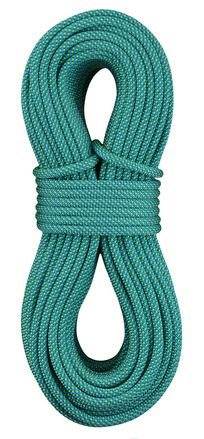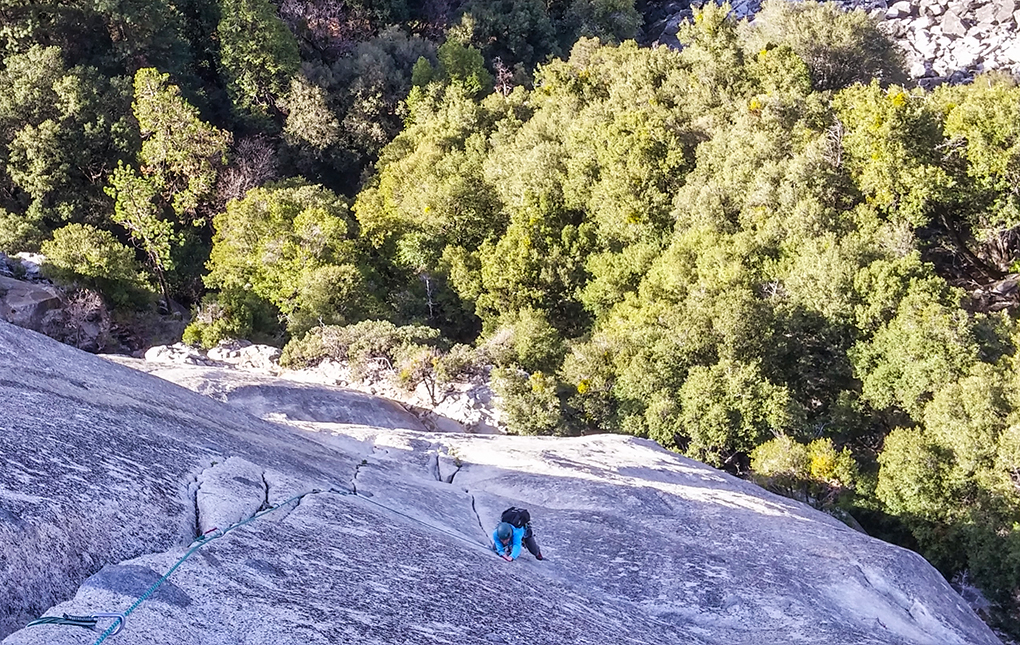
Sterling Evolution Aero Rope
Specs:
Diameter: 9.2mm
UIAA Falls: 7
Weight: 56 g/M
Dynamic Elongation: 33.40%
Static Elongation: 7.70%
Impact Force: 8.5k N
MSRP: $199
Test Duration: 25 days
Test Locations: Clear Creek Canyon, Shelf Road, Boulder Canyon, Eldorado Canyon, Lumpy Ridge, & Rocky Mountain National Park, CO; Fremont Canyon, Vedauwo, & Wild Iris, WY
We recently posted my review of the Sterling Evolution Helix, where I discussed the vital relationship between diameter, durability, and weight.
Now we’re covering the Sterling Evolution Aero, which replaced the 9.2mm Nano in Sterling’s line, and I’ll discuss how the Aero’s updated construction compares to the old Nano.
But while this review centers on the Aero, it also serves as an extension of the discussion of diameter, durability, and weight. So for those interested in that, I’d encourage you to check it out here, then come back.
Upgraded Sheath
Like the Evolution Helix, the Evolution Aero features a sheath that’s been upgraded from Sterling’s earlier ropes.
41% sheath material by mass puts the Aero, even at 9.2mm, toward the top of their line in terms of the percentage of sheath material. (Again, see my previous review for why this matters.)
I should point out that this does not mean the Aero has the same amount of sheath material as the Helix, but rather that it has the same percentage by mass of sheath. The Helix, at 59 g/M, has 24.19 g/M of sheath material, while the Aero, at 56 G/m, has 22.96 g/M.
Even so, the Evolution Aero still stands near the top of the 9.2mm class. It’s just a hair below the Petzl Volta (at 55 g/M and 42% sheath mass, the Volta has 23.1 g/M of sheathing, which is almost identical to the 22.96 g/M on the Aero), and the Aero is substantially above the Mammut Revelation (36%).
At this diameter, I generally lean toward more sheath if I can get it without incurring a big weight penalty. While it’s nice to have a really thin line, it’s also nice to have it last at least a full season, hopefully two.
The Aero, then, by the numbers at least, represents a big step up from Sterling Nano 9.2 mm it replaces (≈24% sheath by mass).
And for the sake of clarity, the Evolution Aero replaces the Nano 9.2 mm, and not the Nano IX (9 mm and still part of the current lineup) which is a different rope with a thinner diameter.
I owned and loved the old Sterling Nano 9.2 mm until I broke through the sheath in several places. That’s no fault of Sterling’s, it’s a thinner line and rock climbing is abusive. Fine.
But bulking up the sheath on the Aero so I can avoid the tired zero-sum game between diameter, weight, and durability was a phenomenal decision by Sterling.
Durability
After abusing the Evolution Aero at Clear Creek Canyon, Shelf Road, Boulder Canyon, Vedauwoo, Fremont Canyon, and Rocky Mountain National Park, I can say definitively that the Aero is a much tougher rope than the old Nano 9.2 mm. The increased sheath material brought about an impressive improvement in durability, while only sacrificing 3 grams per meter to the old Nano 9.2 mm.
Handling
The handling of the Aero is excellent—better than the Petzl Volta, and on par with the Mammut Revelation.
The Revelation is a rope I’ve loved for its smooth handling, but it fell apart on me over the course of a single season.
The Aero delivers the incredible handling of the Revelation without sacrificing its durability.
The Aero’s Home Turf
But while the Evolution Aero is a great rope, it isn’t the best rope for everyone. Because of its borderline specialist status (granted, 9.2 mm isn’t outrageously thin for a single line these days—there are ropes like the the 8.6 mm Edelrid Corbie), the Aero isn’t a great cragging or beginner rope.

This doesn’t mean that the Evolution Aero doesn’t perform well in those environments, because it can. However, those situations don’t place much emphasis on the benefits of a thin, high performance single like the Aero, so you don’t really get the return for sacrificing some of the durability of a 9.8mm or even 10.2mm cord.
In the alpine however, the Aero is awesome. Larger single ropes work fine for alpine climbing, but 9.8mm or 10.2mm singles really have a minimal weight advantage over modern doubles/twins. This puts heavier singles at a big disadvantage in the alpine, since you either have to avoid full length rappels or bring a tag line.
The Aero, however, is lighter on the approach and on the route, as well as smaller in your pack, than thicker singles or twin systems. Granted, we’re talking about single digit grams per meter, but that definitely makes a difference over the full length of a rope.
So if you want one rope to do everything, the Evolution Helix is a great choice, and more appropriate than the Evolution Aero for climbers who crag heavily, climb with beginners, or abuse the rope while sussing out a project.
The Evolution Aero, on the other hand, has the edge if you’re going to spend more than one or two days in the alpine each season, or if you’re breaking into more elite single-pitch grades where you might notice the benefits of a slightly slimmer line.
In a nutshell, the Aero can be viewed as a more advanced rope than the Helix for more advanced climbers.
Bottom Line
The Sterling Evolution Aero’s increased sheath material represents an improvement over its predecessor, the Sterling Nano 9.2mm, and the already great Mammut Revelation. The Aero is more durable than either rope, yet it doesn’t sacrifice smooth handling.
While not everyone can reap the benefits of a thinner line, if you’re looking to shed some grams without sacrificing durability, the Sterling Evolution Aero is the best 9.2 mm rope on the market right now.
